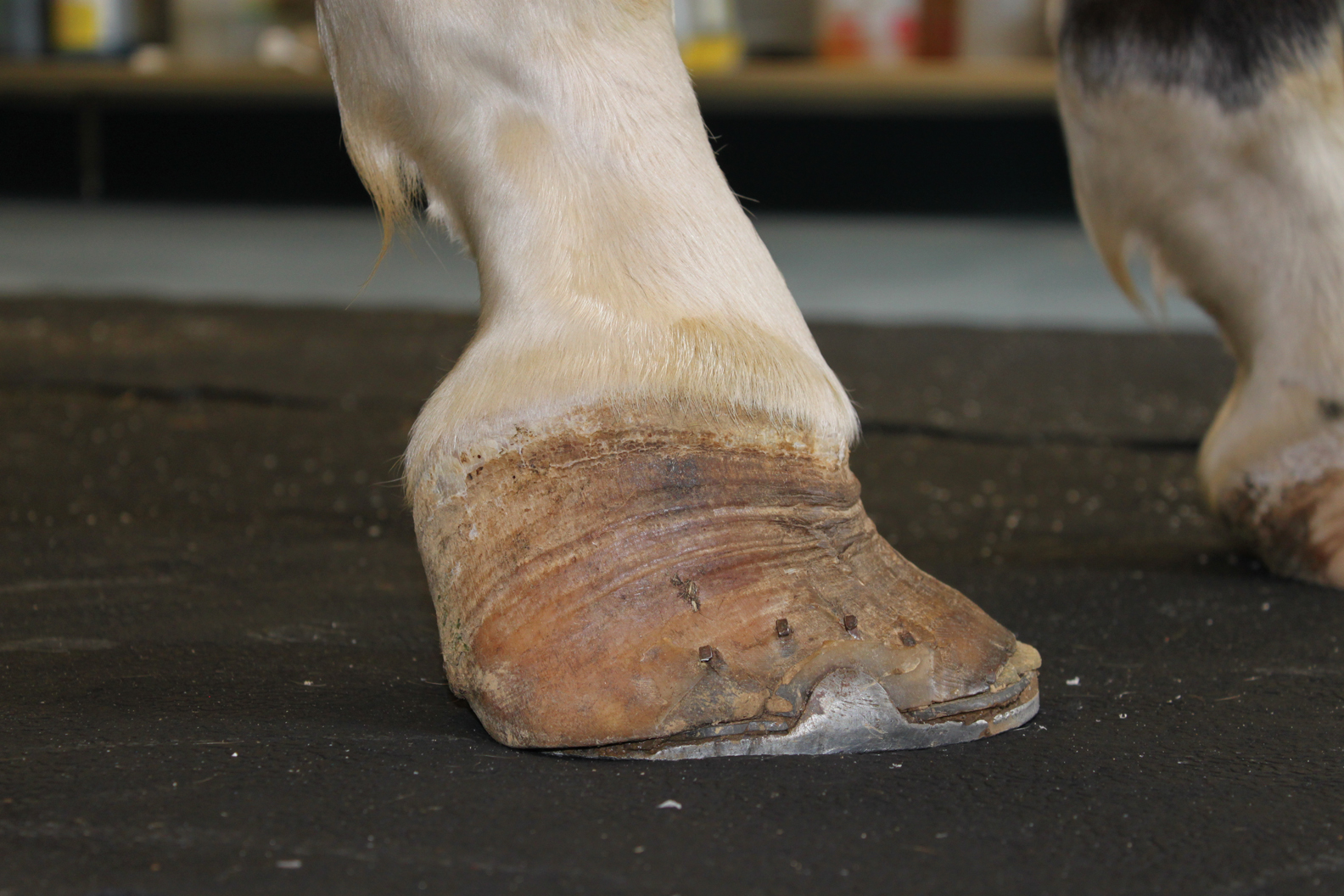
Club Foot in Horses Equine Chronicle
Most horsemen define a club foot as hoof and pastern angle of more than 60 degrees, making the foot more upright than normal. The affected hoof is usually stumpy with a short toe and long, upright heel.

Michael Porter, Equine Veterinarian Club foot!!
A clubfoot has been classically defined as a hoof that meets the ground at an angle greater than 60°6 and can be further classified into two types: stage 1 or type 1, in which the hoof axis is less than or equal to 90°, and stage 2 or type 2, in which the hoof to ground angle is greater than 90°.7 A recently proposed classification system design.
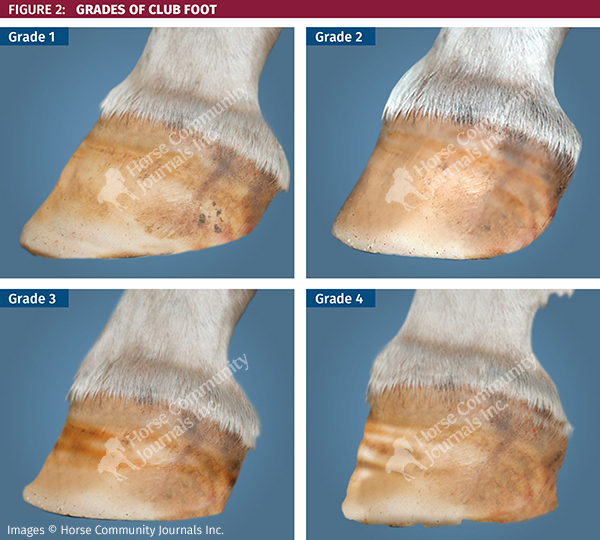
Recognizing and Managing the Club Foot in Horses Horse Journals
Anyone who has spent any time with equines has undoubtedly seen club feet. A club foot horse is typically recognized and defined as having one front hoof growing at a much steeper angle than the other, with a short dished toe, very high heels, extremely curved wall and straight bars.

Recognizing and Managing the Club Foot in Horses Horse Journals
According to Dr. Rooney, the equine condition referred to as "club foot," does not equate to the common human birth defect known by the same name. Dr. Rooney said that it is incorrect to describe the condition as a contraction of the deep flexor tendon, as is common, because tendons do not technically contract and relax the way muscles do, they.
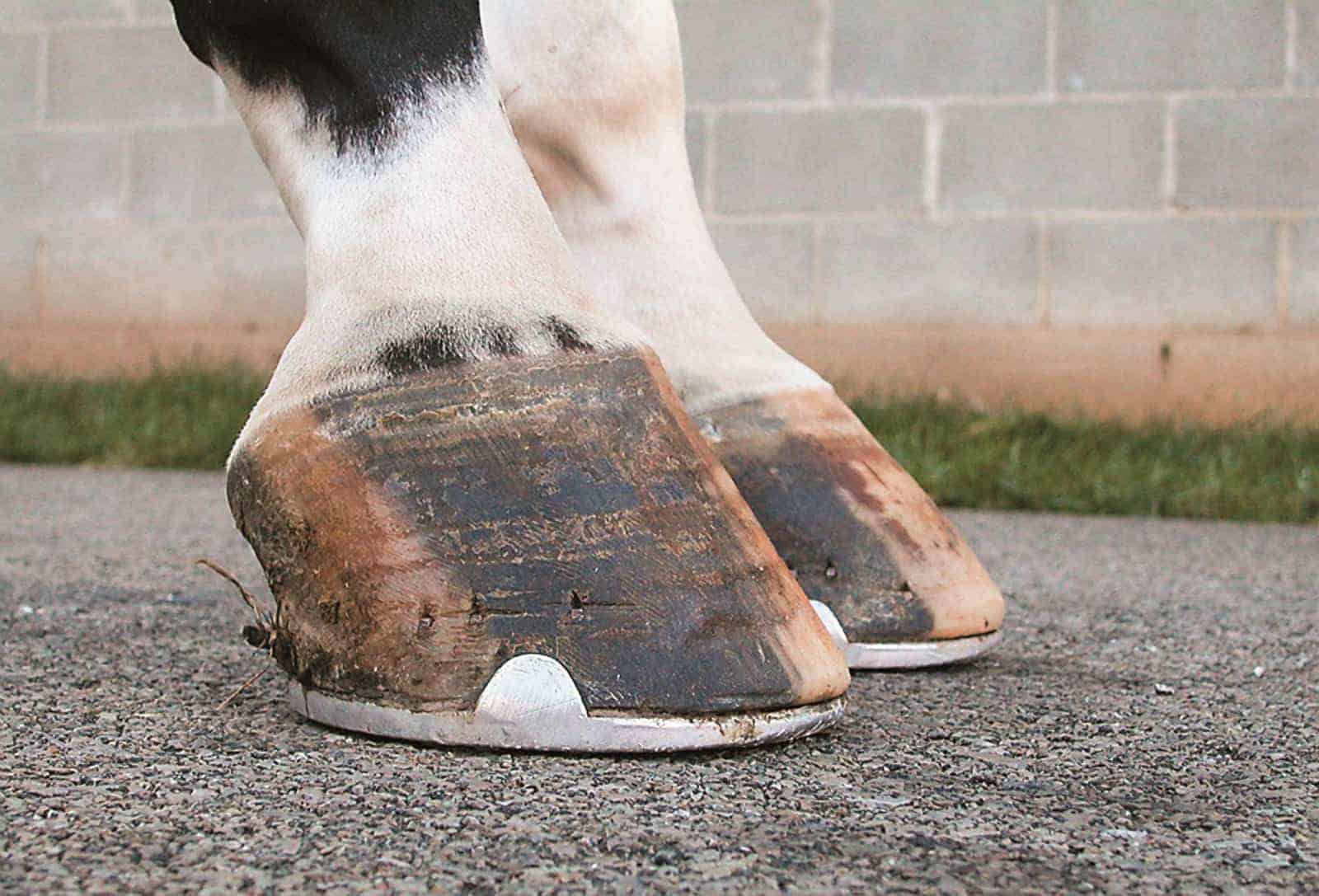
Managing the Club Foot The Horse
Club foot refers to a tendon flaw that causes the hoof to be very upright. Often, club foot affects both front legs with one being more severe than the other. Club foot can occur before or after birth in foals. After birth foals acquire club feet when the bones grow faster than the tendons.
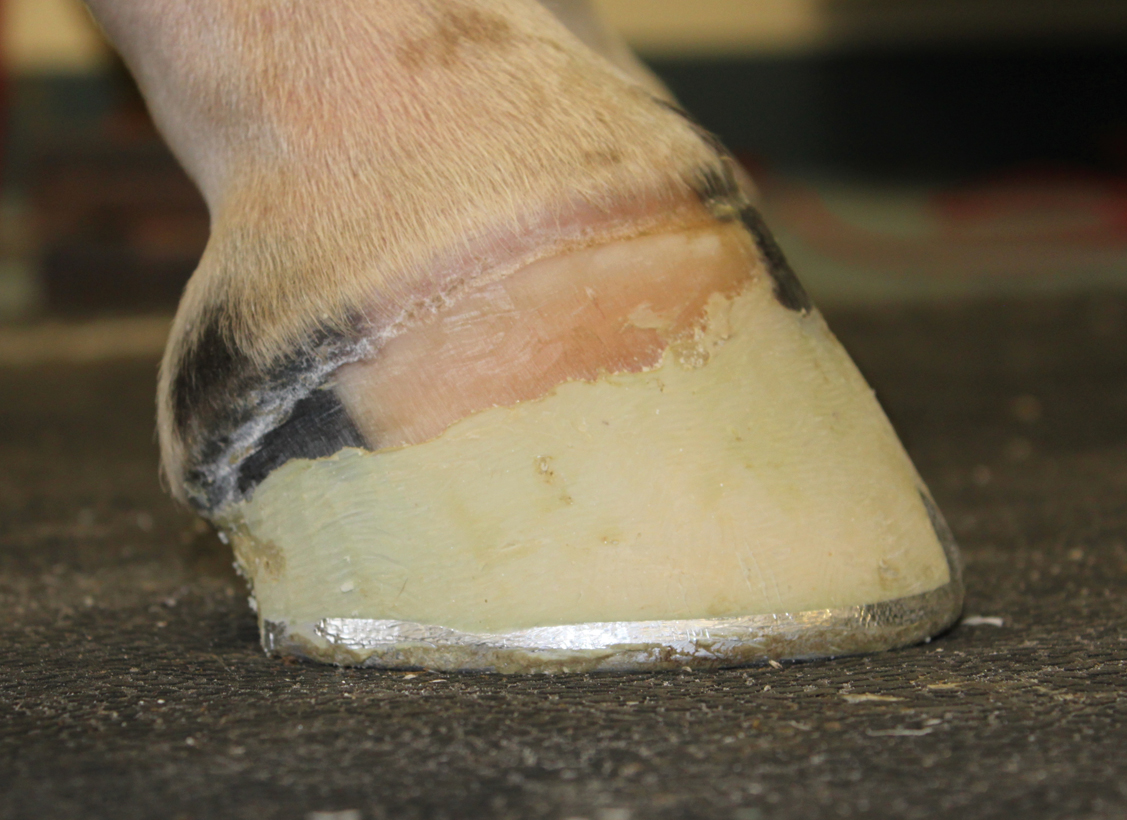
Club Foot in Horses Equine Chronicle
A horse with a club foot is kind of like a horse in high heels: The hoof angle becomes raised and the horse walks on his toe due to a shortening of the musculotendinous unit (the unit.
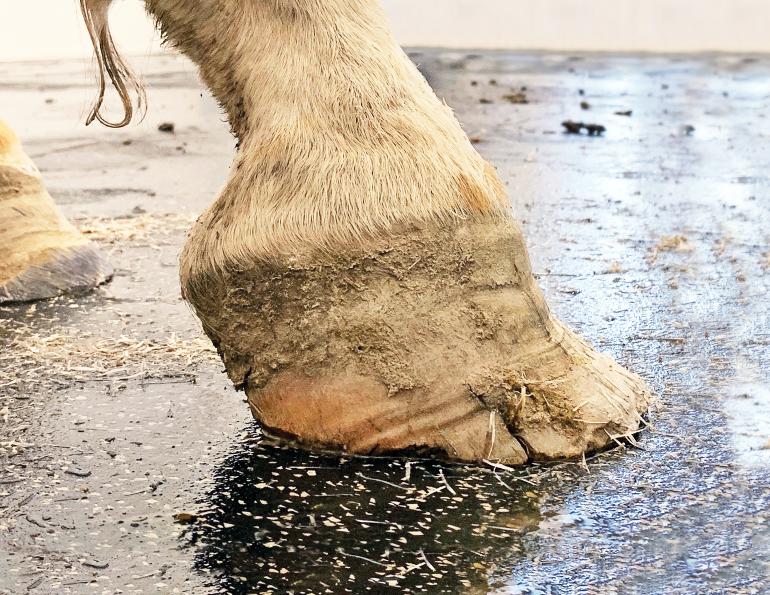
Recognizing and Managing the Club Foot in Horses Horse Journals
In a club foot, the angle of the hoof and pastern in relation to the ground is abnormally steep. In the past, the condition was defined as any hoof angle that exceeded 60 degrees, but the reality is not quite that exact. A "normal" angle for a horse's hooves varies by the individual.

Foal Deformities Imprint Equine Foot Care
Written and presented April 2012 by R.F. (Ric) Redden, DVM To better understand the club foot syndrome, we must be familiar with the mechanical formula and how it greatly influences the various degrees of hoof capsule distortion and bone remodeling associated with this syndrome. There appears to be a direct relationship between the degree of tension increase or contributive force of the DDF.

The Tolerable Club Foot The Horse Club foot, Healthy horses, Horses
A horse club foot is a condition that can cause significant discomfort and lameness in horses. The hoof of the affected leg appears misshapen and more upright than a normal hoof. Proper management of this condition is crucial to prevent long-term effects on the horse's health and performance.

Club Foot The Horse's Advocate
April 28, 2021 Posted by Nancy S. Loving, DVM Veterinarians and farriers can work together to help club-footed horses lead productive lives. Topics: Article, Club Feet, Foal Care, Hoof Balance,.
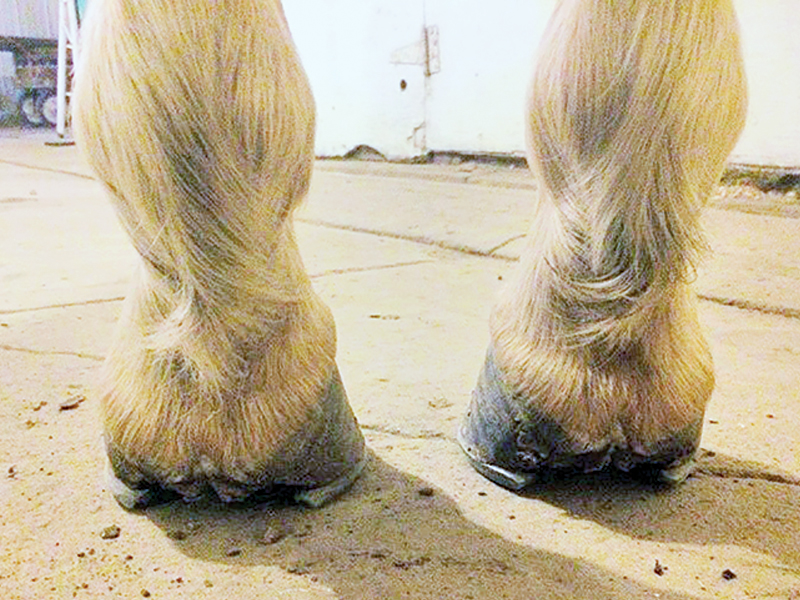
Recognizing and Managing the Club Foot in Horses Horse Journals
Club foot is a term commonly used to describe an abnormally upright front foot conformation. | Photo: The Horse Staff Q: The farm I work for has a mare with a club foot.
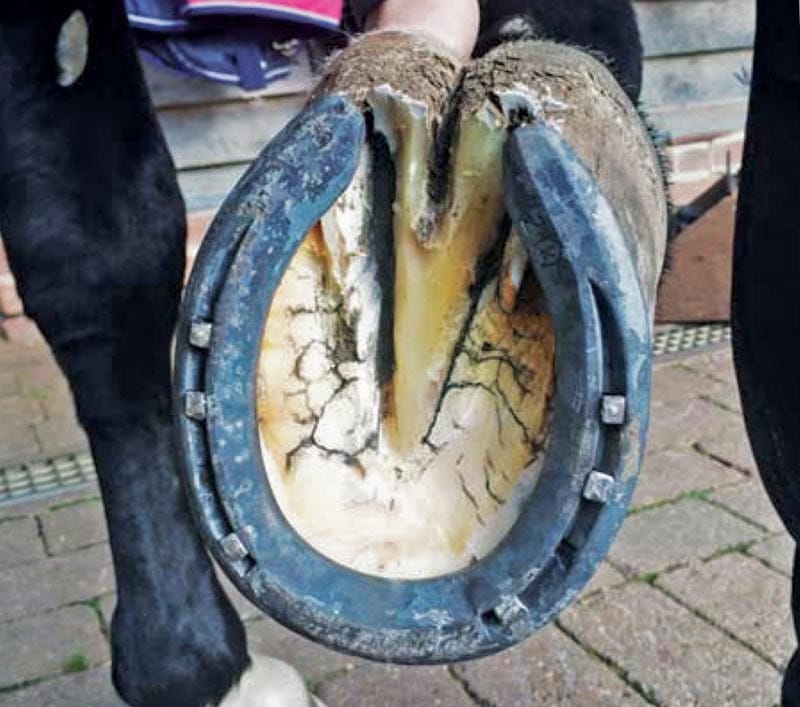
Defining and Fixing a Horse’s Club Foot
Scientifically, a club foot is a flexor contraction of the coffin joint, preventing normal extension. But, what does that actually mean? That statement may not mean much to anyone that doesn't have a significant equine anatomical and biomechanics understanding. So, let's break it down.
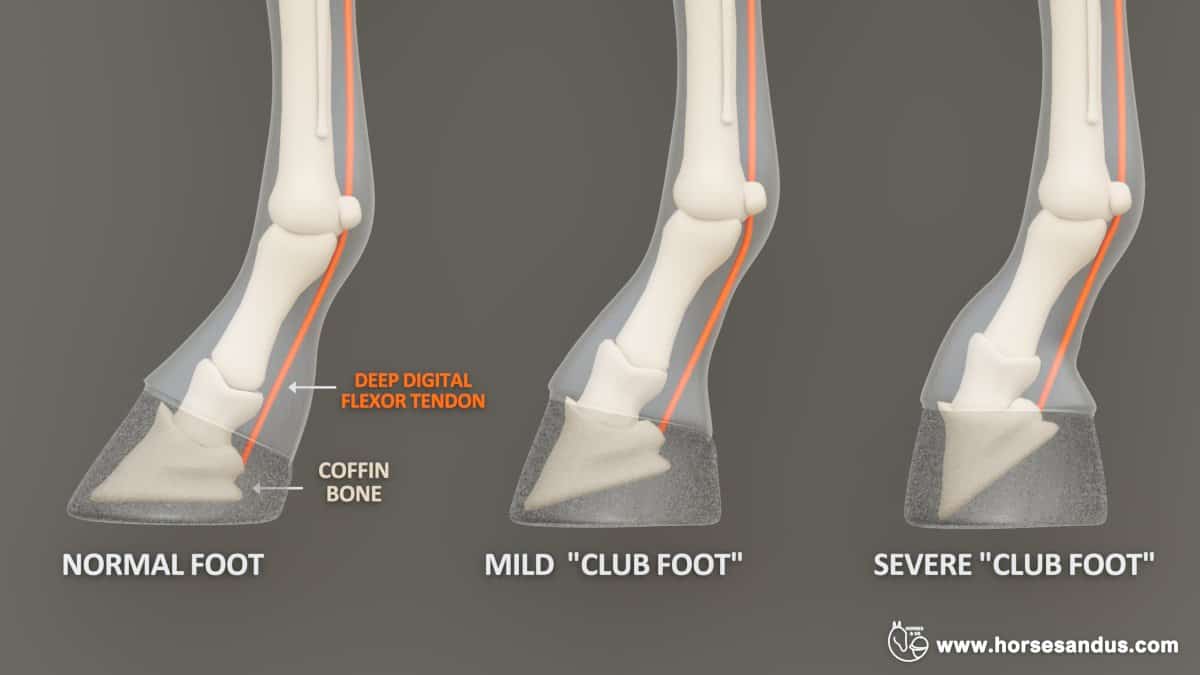
Developmental Orthopedic Disease in Horses [Beginner Guide]
EvRMoore Equine- equine show and training facility near Charlotte, NC and Tryon, NC. Hunters, Jumpers, Dressage

Club Foot in Horses Symptoms, Causes, Diagnosis, Treatment, Recovery
Many horses have what are known as "mismatched feet" ( ). This occurs when the horse has a higher or more upright hoof angle on one foot and a low hoof capsule angle on the opposite foot. We'll explore later on how this differs from feet that are defined as "club feet."
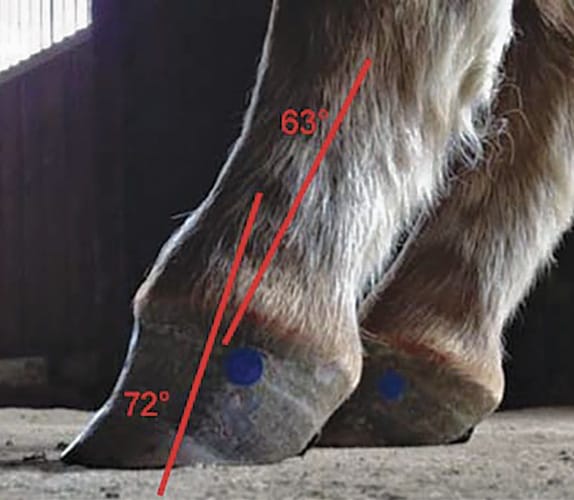
club foot horse cause Merna Tanner
Young Foals Foals between three months to three years that develop club foot will need a balanced diet low in calories and sugar. Most mild cases will only need pain relief, trimming of the heel, toe extensions, and exercise to stretch out the tendons. More severe cases need surgery to cut the tendon, allowing the heel to stretch down.

club foot horse pictures Several Major Microblog Art Gallery
Caused by abnormal contraction of the deep digital flexor tendon, a club foot puts pressure on the coffin joint and initiates a change in a hoof's biomechanics. Telltale signs of a club foot may include an excessively steep hoof angle, a distended coronary band, growth rings that are wider at the heels, contracted heels, and dished toes.